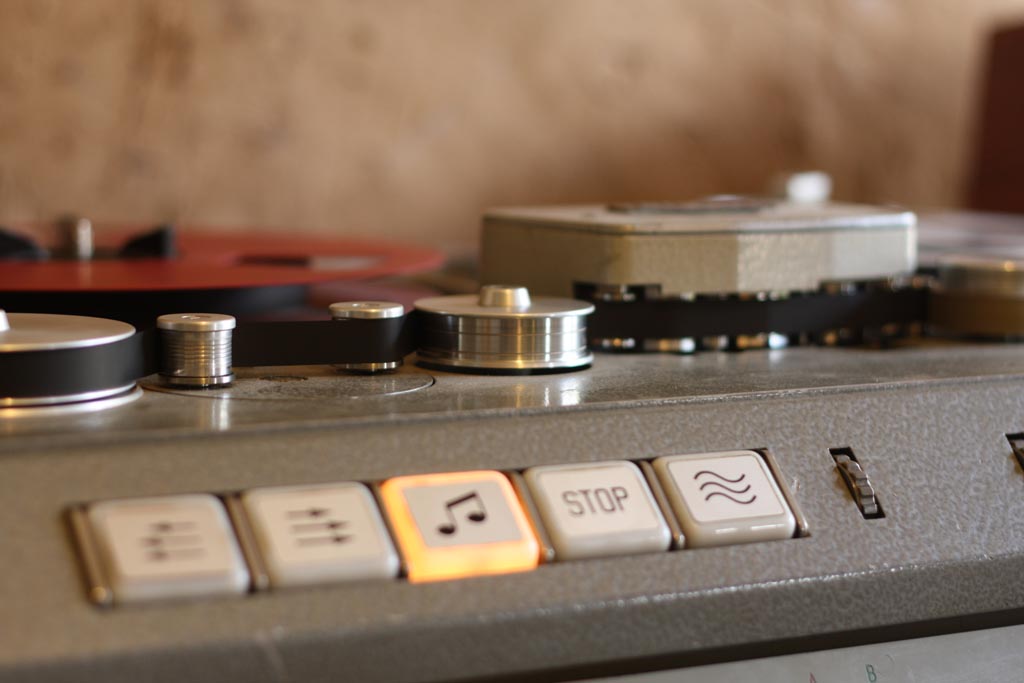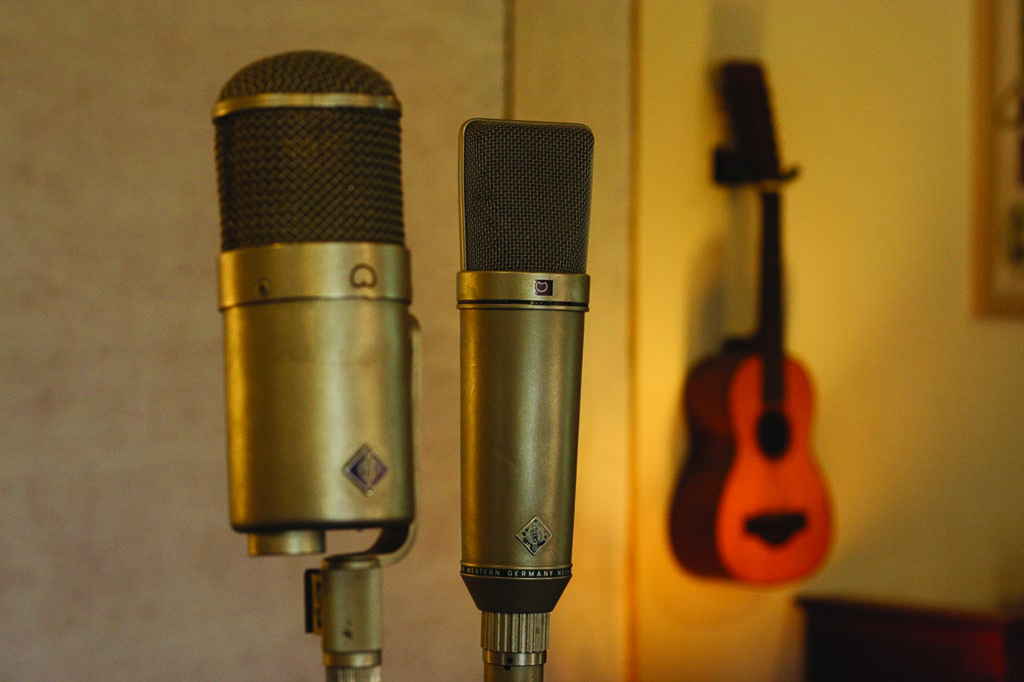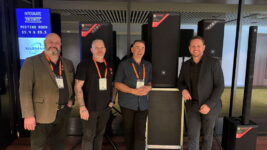LISTEN HERE
5 May 2023
RETRO GEAR – Don’t Shed A Tear

Subscribe to CX E-News
Almost everyone in the audio industry grows up with stars in their eyes, dreaming of becoming a rock star, hob-knobbing with rock stars or working in the industry with ‘heavy hitters’. But a far kookier group of individuals have no such dreams or expectations. They simply like owning retro gear, and here in this dusty back room of the audio industry, the measure of success is not fame, fortune, fast cars or clean clothes (certainly not clean clothes!), but rather esoteric audio equipment of all types and from every era. The key criteria? Paying nothing for it!
It’s a kind of backwards logic, the world of retro gear ownership. While most normal human beings, for good or ill, tend to show off their latest purchases, new houses, cars, clothes, or private jets, boasting along the way about how expensive they were, retro gear aficionados are all about finding a Holy Grail in someone’s cupboard and paying almost nothing for it.
The motivation is simple: find said Grail (or lesser relic of significance), pay a pittance to the poor bastard who was unaware of its current value, take it home, stash it somewhere, don’t bother checking whether it works or not, and then rush online to tell everyone in your crusty club what you just scored. The two important facts are that A: the item is safely stored somewhere in your shambolic collection, and B: you paid very little for it (even though the embedded cost of the purchase probably involved searching everywhere for it for the last 10 years, cynically befriending old ABC employees and scouring every garage sale from here to Timbuctoo).

And after it’s safely locked away in your crusty collection, who cares what you do with it, right? You own it and that’s what matters.
The only caveat here (that no-one in the club talks about… shhh!) is that you just outed yourself as a conman, a tight arse, penniless and unscrupulous. But if you’re okay with that, and everyone in the club lives by these same high moral standards, then I s’pose that’s cool, right?
Sorry, I must apologise. Someone reading this general appraisal of the retro gear collective might have their nose out of joint by now. If you do, I’d assert that you’re not, in fact, in this club at all, but rather a slightly different variant.
You’re into your retro audio gear, no question, maybe even a ‘lifer’ as we call them. But your primary objective (correction: secondary objective; the primary objective is always boasting about your acquisitions) is to use the gear you acquire, and often in the workplace.
For you, storing old retro gear in a warehouse isn’t cool at all, or nearly good enough.
Indeed, some in your group might argue that hoarding old gear in a cupboard somewhere is downright sacrilegious. You and your fellow club members are not hoarders, not even close, or so you say! You are enthusiasts with a penchant for old gear, great sound and a cool vibe that no modern audio equipment could ever hope to replicate.
You are all about what you produce with the retro gear you own. Oh, and that your latest production was made using equipment that originally cost $1.5 million but was purchased more recently for $19.45.
Ok, stop the press! If I’m to be cast as a member of any retro audio gear club, I suspect it’s this second one.

Use It or Lose It
My own personal take on retro gear membership after all this time is quite simple: if you don’t use the gear you acquire, please don’t bang on about it either. Or better still, don’t buy it in the first place!
I can’t stop anyone acquiring old retro gear of course. Hey, I can’t even stop myself! But to me there’s nothing more tiresome or galling than a retro gear hoarder with a big mouth. Whether it’s a story about a newly acquired AWA compressor that Uncle Fred took from an ABC service locker 40 years ago, or the 70s preamp that was removed from a Neve console that died in 1983, hearing someone blather on about this stuff when they never use it is like taking a Pacific Cruise in rough seas; it makes me want to hurl.
I guess I just can’t stand try-hards in general; people who pretend to be something they’re not. And when it comes to the world of pro audio the deception seems particularly pathetic. Why people would want to go around boasting about owning old audio equipment without any interest in actually using any of it is quite beyond me. Could there be a worse thing to collect to then only boast about owning? Old golf clubs perhaps?
But don’t get me wrong, some retro audio gear can be incredibly rewarding to own, although I must stress the significance of the word ‘some’ here. Not all old gear was, or is, good gear. Indeed, most old pro audio equipment made decades ago was unreliable, ordinary sounding, devoid of much in the way of controls, and noisy, stuff only desperate retro junkies or hopeless audio romantics could place value in.
The counter argument to this, however, is that if it works and you use it in earnest at the coalface of audio production, then why not? If you like that a certain piece of gear sounds magnificently crap filtering your Juno 60 via a Princeton amp, mic’d with your favourite Reslo ribbon and Rola preamp, then awesome… that is a win. Even if you just like plugging all this stuff in and enjoying the fact that signal still flows through it, then that’s cool too.
But when you buy a piece of retro gear and do nothing other than boast about it on an international snoozefest forum, then I’m sorry but that’s when you just look like the main controls on an old Fairchild 670 – a big knob.

Cool & The Gang
To me retro gear has a fantastic role to play in any studio or musical setting. And believe me I should know. I can’t think of a single session in the last 35+ years where, as a producer, engineer, mixer or musician, I haven’t been surrounded by a large collection of glowing meters, Bakelite knobs and stepped potentiometers all heating up the room in a glorious celebration of magnificent sound and passive heat exchange.
Most of the gear I own here at The Mill has a story to tell, whether it’s the old Studer half-inch tape machine from 1961 (that paradoxically doesn’t sound anywhere near as crusty as it looks), Billy Thorpe’s old Neumann vocal mic, the Dimension D from Richmond Recorders, the 480L from the Olympics, or the Quad Eight preamp/EQ modules from Burbank Studios where Star Wars was mixed… it all has a vibe as well as a sound. It’s this audio aesthetic that I enjoy being surrounded by. It’s familiar to me, it’s great sounding and mostly still functional.
But not always, and this is where reality trumps romanticism.
The main pitfall of owning any old retro gear is reliability. The day your Neve preamp loses all its tone and suddenly sounds like a transistor radio, your Neumann valve condenser develops a euphonic overtone befitting a Northern Territory hurricane, or your Farfisa organ’s G and F# notes all sound like the ‘beep, beep, beep’ of a 50-in-1 Electronics set… that’s the day when you’ll curse all this ‘cool’ gear as a delusional hoax that you’ve unwittingly played on yourself!
If you’re producing music, live broadcasts, ads, or music for films or games… whatever it is you do, the gear you use needs to work for you every day with a certain level of guaranteed reliability. When things fail, it’s never a good day in the studio, let alone live-to-air. Having a significant percentage of retro gear in your facility, whether it be ‘classic’ or ‘retro,’ can add a huge unreliability quotient to your system, and if this is where you derive your main income, that can be a dangerous game to play.
Be mindful also that collecting retro gear can become more addictive and deplete your bank account faster than a heroin habit, as well as distract you utterly from your main aim; producing great audio tracks. And if you’re not very careful, you may wake up one morning on the dusty warehouse floor realising at that moment that you’ve switched over to the Retro Hoarder cohort: a group of crusties with whom you really never want to be associated.
Owning a bunch of old gear isn’t cool in and of itself. Not even in the slightest.
Maintaining the old gear well, either yourself or with a tech, and using this ‘cool’ equipment in combination with other decent gear made last century as well as last week is the best way to go. It’s all about mixing things up and having lots of colours in the palette. Whatever you do, don’t disappear down a retro rabbit hole and pop out in the land of topsy-turvy where everyone reckons only retro gear is worth using. That is garbage.
Perhaps a good way to test your motivation for owning a piece of ‘classic’ retro gear might be to contemplate this last fact.
Telefunken Elektroakustik recently bought the rights to manufacture the iconic Fairchild 670… the Holy Grail of tube compressors. I haven’t heard one yet myself, but Telefunken claims it’s a faithful recreation of the original. Given this, and assuming you were flushed with cash and in the market for said beast, would you buy a brand new one off Telefunken that will presumably offer superior reliability and longevity, or search around for another 10 years for an original?
You have a choice: pay US75k for the original, US$35k for a new one, or keep searching in deceased estate auctions for a lost one… who knows, you might get lucky.
Andy Stewart owns and operates The Mill studio in Victoria, a world class production and mastering facility. He’s happy to respond to any pleas for recording, mixing or mastering help… contact him at: andy@themill.net.au or visit www.themill.net.au
Subscribe
Published monthly since 1991, our famous AV industry magazine is free for download or pay for print. Subscribers also receive CX News, our free weekly email with the latest industry news and jobs.






